The Economics and Statistics Division maintains archives of previous publications for accountability purposes, but makes no updates to keep these documents current with the latest data revisions from Statistics Canada. As a result, information in older documents may not be accurate. Please exercise caution when referring to older documents. For the latest information and historical data, please contact the individual listed to the right.
<--- Return to Archive
For additional information relating to this article, please contact:
March 17, 2022NOVA SCOTIA QUARTERLY POPULATION ESTIMATES AS OF JANUARY 1, 2022 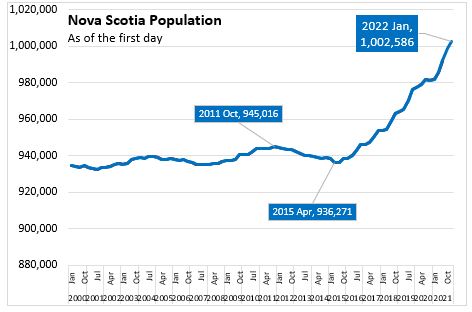
Nova Scotia's population exceeded 1 million persons as of January 1, 2022 at 1,002,586. This is the highest population for Nova Scotia on record. Since April 1, 2015 Nova Scotia's population has increased by 66,315.
Nova Scotia’s population increased by 3,754 (+0.4%) between October 1, 2021 and January 1, 2022. This was the largest Q4 population gain in comparable population records dating back to 1971.
Population growth from January 1, 2021 to January 1, 2022 reflected strong immigration and net interprovincial migration to the province.
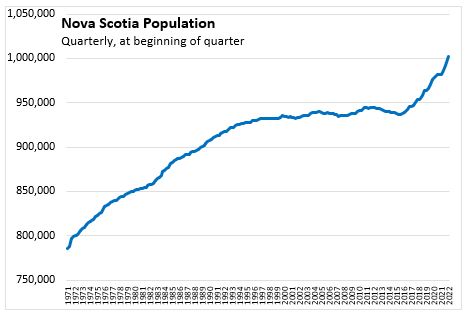
There are seasonal patterns in quarterly population changes, particularly evident in births and migration. From October 1 to December 31 2021, Nova Scotia posted a population increase that is atypically large for the quarter.
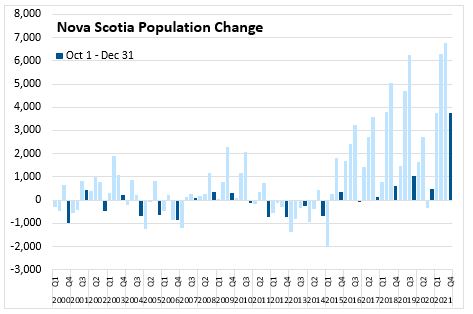
From October 1, 2021 to January 1, 2022 Nova Scotia’s population increased 0.38%, while the national population grew 0.23%. Nova Scotia had the fastest population growth in the quarter among the provinces. Compared with January 1, 2021 Nova Scotia’s population increased 2.10% (+20,574), while the national population grew by 1.20%. Prince Edward Island (+2.98%) had the fastest growth over past year while the slowest was in Saskatchewan (+0.36%).
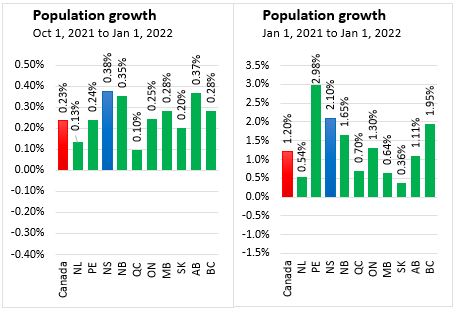
Immigration from other countries has been a strong contributor to population growth in Nova Scotia in recent years. While immigration slowed during periods of border restrictions over the course of the COVID-19 pandemic, there was a strong resurgence of immigration since July 1, 2021. Immigration to the province was at a new high of 3,951 in the period from October 1 to December 31.
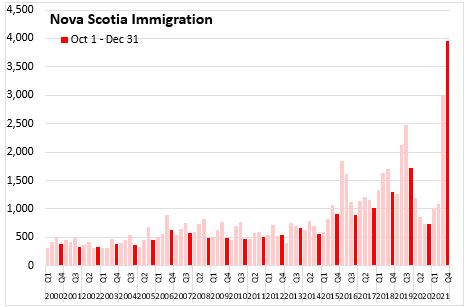
The net change in nonpermanent residents in the province was an outflow of 1,350 from October 1 to December 31. Non-permanent residents is typical an outflow in Q4 of the year.
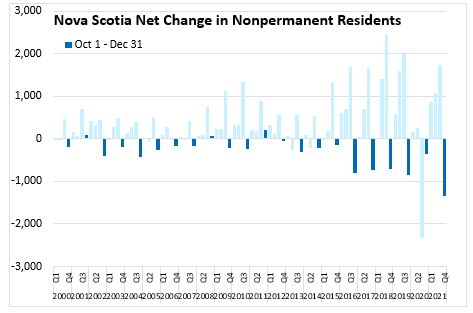
Nova Scotia’s natural population change (the number of births less the number of deaths) has been negative for several years. Between October 1, 2021 and December 31, 2021, there were 1,919 births and 2,652 deaths, amounting to a natural population decline of 733.
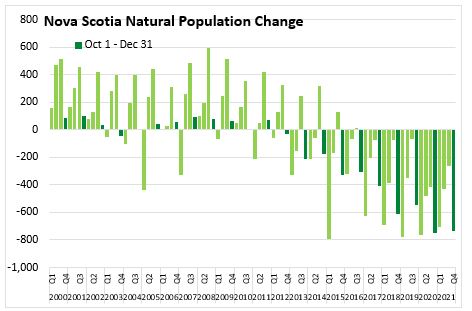
Nova Scotia posted another net increase in interprovincial migration with a gain of 2,057 persons between October 1 and December 30, 2021. There were 4,351 in-migrants and 2,294 out-migrants to other provinces and territories. This is the strongest net interprovincial migration for a Q4 period since 1972, but smaller than the three most recent quarters.
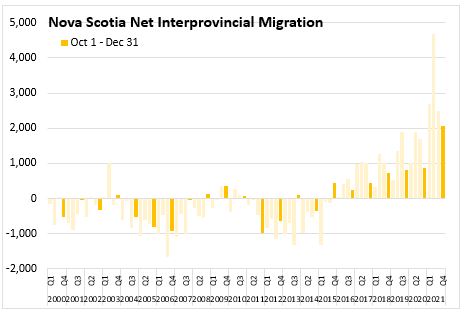
Out-migration from Nova Scotia to other provinces increased by 413 for October 1 to December 31, 2021 compared with the same period in 2020. Out-migration increased the most to Alberta, Ontario, and Quebec.
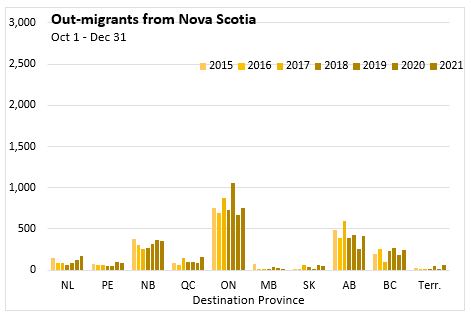
The number in-migrants to Nova Scotia increased by 1,597 comparing the October 1 to December 31 period of 2021 against the same period in 2020. The largest increase of in-migration was reported from Ontario (+1,244) that accounted for 58% of interprovincial in-migrants to Nova Scotia this quarter. In-migration to Nova Scotia from Alberta, British Columbia and Manitoba also increased for Q4 2021 compared to last year.
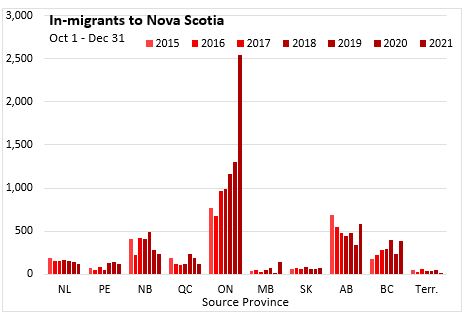
Interprovincial migration to Nova Scotia was a net inflow of 2,057 persons from October 1 to December 31, 2021 (including the territories). The largest net inflows were from Ontario (+1,791) and Alberta (+166). There were net outflows to New Brunswick (-117), Newfoundland and Labrador (-52), the territories (-40) and Quebec (-35).
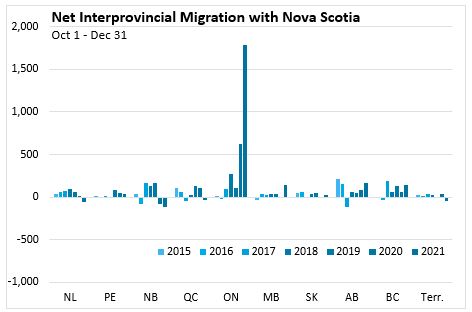
Source: Statistics Canada. Table 17-10-0009-01 Population estimates, quarterly; Table 17-10-0020-01 Estimates of the components of interprovincial migration, quarterly; Table 17-10-0040-01 Estimates of the components of international migration, quarterly; Table 17-10-0045-01 Estimates of interprovincial migrants by province or territory of origin and destination, quarterly; Table 17-10-0059-01 Estimates of the components of natural increase, quarterly
<--- Return to Archive